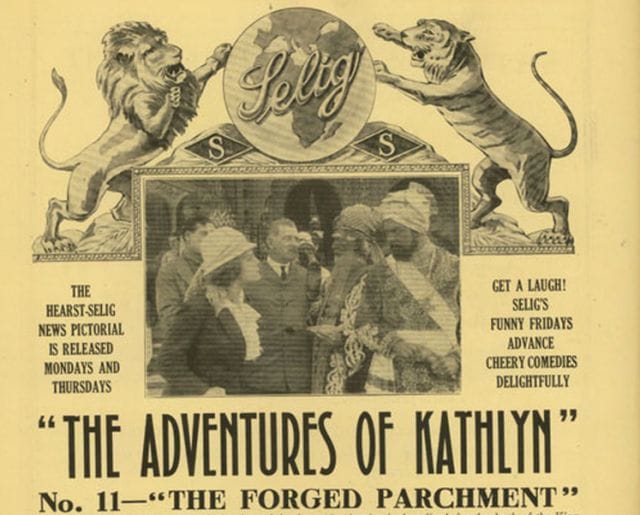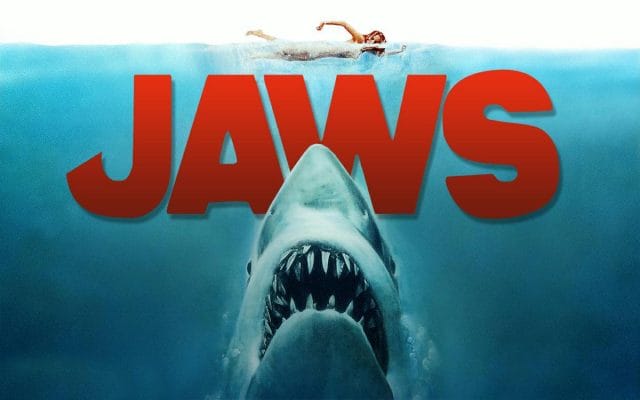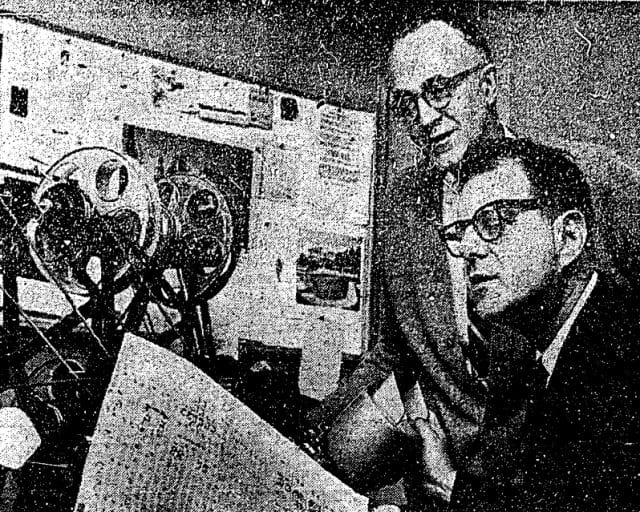
![]()
The green Motion Picture of America Screen, the guy with the deep voice, the montage of gripping moments and dramatic music: we’ve all been persuaded, at some point in our lives, by the grandiosity of a movie trailer. And considering how many we’re exposed to every year, that’s understandable.
Trailers have become inextricably linked with not only every movie theater experience, but online marketing. Every year on the Internet, consumers watch ten billion videos — and of these videos, movie trailers constitute the third most-watched category, behind only news and user-created content.
If you’re like us, you’ve probably wondered why these snippets that precede the main attraction are called “trailers.” Or, perhaps you’ve wondered why these so-called trailers are so formulaic in nature.
To answer these questions, and others, we’ve taken a look back at the history of cinema’s audacious visual advertisements.
The First “Trailers”
Built in the early 1900s, the United States’ first permanent movie theaters featured only one screen. Things worked a bit differently back then: you’d pay your nickel, take a seat, and watch a continuous loop of a feature (mixed with cartoon interludes) for as long as your heart desired.
In 1912, Broadway producer Nils Granlund was hired as the advertising manager for a chain of East Coast movie theaters owned by entrepreneur Marcus Loew. Here, Granlund produced the first-ever trailer — a one-minute spot for the upcoming Broadway show, The Pleasure Seekers — which featured mainly cut up clips from the production’s rehearsals. The advertisement was shown to audiences after the feature film, rather than before it.
That same year, in Chicago, an early film visionary by the name of William Selig decided to apply 19th century society’s interest in print serials (stories published in installments) to films. What resulted was a 13-episode film serial called “The Adventures of Kathlyn.” As with print serials, it was important for Selig to end each segment on a suspenseful note, so as to encourage people to come see the next one. To do this, he decided to include a brief teaser of “next week’s” installment at the end of each one.

An ad for “The Adventures of Kathlyn” (c.1913)
In an archived interview with the Los Angeles Times, a Paramount executive recalls the first of the film’s trailers being shown at a New York amusement park in 1912:
“One of the concessions hung up a white sheet and showed the serial ‘The Adventures of Kathlyn.’ At the end of the reel, Kathlyn was thrown in the lion’s den. After this, ‘trailed’ a piece of film asking, ‘Does she escape the lion’s pit? See next week’s thrilling chapter!’ Hence, the word ‘trailer,’ an advertisement for a coming picture.”
Gradually, these trailers spread in popularity and other promoters sought to integrate them. At first, most promotions were produced by the theaters themselves — but by 1916, major movie studios were releasing their own trailers.
The clips, always shown after the main feature, were first referred to as “trailers” in a 1917 New York Times article that enumerated on the massive spread of their use and integration:
“A committee of the National Association of the Motion Picture Industry yesterday began sending films known as trailers [advertising the bonds] to all of the 15,000 or more movie theaters in the United States. These films are seventy feet in length and will be attached to longer films that are shown at every performance.”
Most of these early trailers were rudimentary and basic, featuring actual clips from the film overlaid with dramatic text and big-name stars (to garner attention). Trailers became so time-consuming for movie studios to make that that were soon looking to outsource the work — and soon, they inadvertently found a solution.
The National Screen Service
In 1919, an enterprising New Yorker named Herman Robbins realized the potential for a dedicated trailer market. So, without so much as attaining the movie studios’ permission, he began taking stills from films, splicing them with text and titles, and selling them to movie theaters himself. He called his company the National Screen Service.
Instead of suing Robbins, the overburdened studios eagerly sent their films to the NSS for him to convert into trailers. The situation was ideal for both parties: the NSS inked deals with hundreds of content-thirsty movie theaters, then paid the studios a “small royalty” for their compliance.
For the next 40 years, with very few exceptions, the NSS dominated the trailer market with its distinctive, formulaic advertisements — usually involving “screen swipes,” “fly-in titles,” and other set film techniques.
Most film historians contend that at some point in the late 1930s, theaters began showing movie trailers before the feature film rather than afterward — most likely because serial-style films were on their way out, and patrons often left the theater immediately following the film. Showing the trailers before, while the audience was obviously captive, proved more effective.
Trailers Get Funky
Lou Harris (seated), head of Paramount’s trailer division in the 1960s
With the 1960s came an era of auteurs — or “filmmakers whose personal influence on their movies is so great that they are regarded as the authors of their movies.”
Alfred Hitchcock, notes Filmmaker IQ, was a pioneer of a new, bold breed of film. For “Psycho” (1960), he prominently featured himself in the trailer, and directly addressed his audience as he guided them on a tour of Bates Motel.
Methods of storytelling were changing in Hollywood, and directors began taking more risks. Dubbed “post-classical cinema,” these films featured out-of-order chronology, “twist endings,” and dialogue that was often hard to attribute to any particular character. For these new directors, the NSS’s formulaic trailer approach wasn’t going to cut it; gradually, control over the trailer market shifted back to the movie studios, which set up more specialized, in-house “trailer divisions.”
Lou Harris was head of Paramount’s trailer division in the 1960s and 70s. In an interview, he recalls the complexity and effort that went into his job:
“My operation is like a studio in miniature. To do my job you have to be a writer, a director, a producer…I deal with schedules and labor, a sound engineer, an editor, and an accountant. I handle purchase orders and approve bills. You also have to be able to read a musical score and know how to get…all kinds of effects.”
Harris worked around the clock on these trailers, which he called “the hard sells” of the movie industry. Some, he says, were “more exciting than the film itself” — like this one he produced for “One Eyed Jacks” (1961):
Due their brevity, trailers were also more difficult to find music for than feature-length films, and often required specially commissioned soundtracks. Soon, music and scoring became increasingly important with trailer production. The Graduate (1967), for instance, featured tracks that were custom-made by folk duo Simon and Garfunkel.
By now, trailers not only were shown before feature films in theaters, but were used as stand-alone advertisements to boost interest in new movies. In the 1970s, the distribution of these trailers would be taken to a whole new level.
Jaws, and the Rise of the Epic Trailer
Though theaters with multiple screens existed as early as the late 1940s, it wasn’t really until the 1970s that “multiplexes” became the norm. With an increasing number of films being released for the wide screen, movie studios began to put more emphasis on the distribution of their trailers. No one did this better than Universal Pictures, with their 1975 shark-attack thriller, Jaws.
Until that point, the movie distribution process was a bit slower-moving: a film would debut in big cities only, then gradually be disseminated to smaller towns over a period of months. Jaws tore this model apart. Instead, Universal organized an all-out PR assault and simultaneously released the film in 464 theaters on the day of the premier.
Though Jaws only had a $4 million production budget, $1.8 million was spent on promotional material — $700,000 of which was allocated to pepper television viewers with trailers all summer long. More than twenty-five 30-second trailers — each with slight variations — aired between June 18 and June 20, 1975 (opening day). The hype built around the trailers proved successful: Jaws made $7 million in its first weekend.

Eventually, the movie trailer, in general, became less of an advertisement, and more of a miniature, stand-alone film. Today’s studios vie to produce visually alluring, captivating trailers not just to advertise their films, but to vie for spots on “best trailers” lists, or for millions of views on YouTube.
Most modern trailers follow a sort of “three-act” structure: the first act establishes the story’s basic premise, the second act harps on the story’s plot, and the third act usually cues in some hybrid of dramatic music, suspenseful/emotional/funny scenes, and narration. On the topic of this last “act,” no movie trailer article would be complete without a nod to Don LaFontaine, who pioneered the deep voice narration style, and the “in a world where…” trope which is still widely used today.
But why, after all these years, has the word “trailer” endured?
“[Studios] have tried calling them ‘previews,’ or ‘prevues of coming attractions,’” reasoned a Paramount producer in an interview— but society has, so far, refused to accept anything other than what it’s used to.
![]()
This post was written by Zachary Crockett. You can follow him on Twitter here.
To get occasional notifications when we write blog posts, please sign up for our email list.




